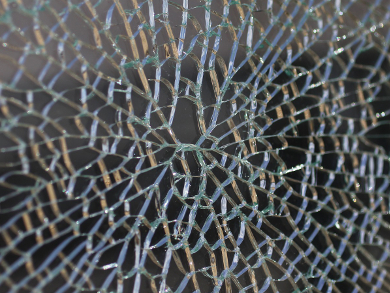Oxide glasses are indispensable in modern industry. However, they are often brittle, which limits their fracture resistance. Post-processing techniques such as the formation of compressive stress layers at the surface can provide fracture toughness but are expensive and come with undesirable side effects. Therefore, there is a need to develop new glass materials with improved intrinsic mechanical properties to enhance crack resistance during handling.
Morten M. Smedskjaer, Aalborg University, Denmark, and colleagues have investigated the structural requirements for damage-resistant bulk oxide glasses and developed a novel melt-quenched lithium aluminoborate glass composed of Li2O (24 mol%), Al2O3 (21 mol%), and B2O3 (55 mol%).
The team demonstrated that the crack resistance is controlled by the ability of the glass to adapt its local atomic structure and densify under pressure. Indeed, the new composite material is free of nonbridging oxygen atoms, which can facilitate isochoric shear flow, a type of deformation which causes subsurface damage in the glass. Additionally, the trigonal boron units allow for densification through decreasing bond angles and bond lengths as well as increasing coordination numbers. These characteristics prevent subsurface damages and residual stress, which are the driving forces for cracking in oxide glasses.
- Discovery of Ultra-Crack-Resistant Oxide Glasses with Adaptive Networks,
Kacper Januchta, Randall E. Youngman, Ashutosh Goel, Mathieu Bauchy, Stephan L. Logunov, Sylwester J. Rzoska, Michal Bockowski, Lars R. Jensen, Morten M. Smedskjaer,
Chem. Mater. 2017.
DOI: 10.1021/acs.chemmater.7b00921



